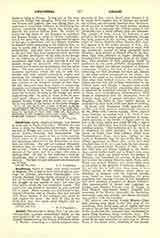

Amalberga, Saint, otherwise Amelia, was related in some way to Pepin of Landen. Whether she was sister or niece, the Bollandists are not sure. She was married to Witger and became the mother of three saints, Gudila, Reinelda, and Emembertus. The Norman chroniclers speak of her as twice married, which seems to be erroneous. Nor are Pharailda and Ermelende admitted by the Bollandists to have been her children. She and her husband ultimately withdrew from the world, he becoming a monk, and she a nun. There is very great confusion in the records of this saint, and of a virgin who came a century after. To add to the difficulty a third St. Amalberga, also a virgin, appears in the twelfth century. The first two are celebrated simultaneously on July 10.
T. J. CAMPBELL

